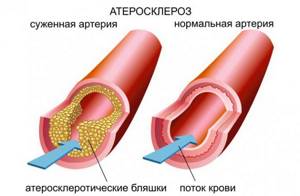We all know that excess weight leads to unpleasant health consequences. Obesity is a deterioration in the quality of life, an increased risk of early death, a host of diseases - from cholelithiasis and pancreatitis, diabetes mellitus and hypertension to serious problems with the musculoskeletal system (damage to the joints of the lower extremities, spine) and other organs and systems of the body.
But where is the limit of excess weight beyond which health problems begin? American and European scientists tried to answer this question by conducting several large-scale studies and analyzing long-term observational data on approximately three million people in different countries.
General harm of excess weight to health
Fatness has become almost the norm in the modern world. Everyone suspects the dangers of excess weight to health. It not only spoils a person’s appearance. Most modern diseases are a consequence of obesity.
According to statistical medical data:
- Overweight people are 3 times more likely to suffer from hypertension.
- Obese people suffer from atherosclerosis, heart and vascular diseases 2 times more.
- The risk of diabetes in obese people is 10 times higher than in asthenic people.
- Life expectancy for obese people is 1.5 times shorter than for lean people.
Being overweight threatens the development of many serious diseases. Most of them can cause death. Not to mention that they significantly reduce the quality of life.
Excess weight has the following health risks:
- The functioning of the cardiovascular system is disrupted. Due to poor nutrition, cholesterol is deposited, which interferes with normal blood supply to the body. As a result, irreversible diseases develop. People suffer from heart failure, high blood pressure, and atherosclerosis. All this leads to stroke, heart attack, and premature death.

- Diabetes occurs. High calorie meals and lack of physical activity lead to a decrease in the sensitivity of receptors to insulin. Its constantly high level provokes malfunctions of the thyroid gland. As a result, all this leads to diabetes, which also threatens kidney failure and the development of gangrene. In some advanced cases, amputation of limbs is even possible.
- Plus, obese people are more likely to have diseases of the genitourinary system, cholecystitis, kidney and liver stones.
- Hormonal imbalances occur. Obesity reduces the production of sex hormones, especially in men. In addition, disturbances in the functioning of the endocrine system also cause disruptions in the body.
- Increased load on joints and spine. Obesity seriously interferes with their proper functioning. Over time, the cartilage lubricant begins to wear off. The muscles weaken, so the main load falls on the joints and ligaments. Arthritis, arthrosis, and osteochondrosis develop.
To avoid the above diseases and other harm from excess weight to the body, it is important to monitor your diet and exercise regularly. To lose weight, it is better to choose low-calorie diets that will not harm the body and at the same time lose weight.
We recommend reading the article about the sedentary lifestyle diet. From it you will learn about the causes of excess weight, the consequences of poor nutrition, and the recommended diet for weight loss. And here is more information about how to lose weight without harm to your health.
For hormones
Statistics show that menstrual dysfunction in women occurs 4 times more often when they are obese. And if excess weight was present in adolescence, when hormonal changes occur, the disorder becomes more pronounced.
A decreased chance of conceiving a child may also be associated with obesity, and the higher the stage of the disease, the higher the risk for a woman of being infertile.
For men, reproductive problems are often associated with significant weight gain. Due to obesity, erection may deteriorate and libido may weaken.

Excess weight adds a woman several years.
This is explained as follows:
- with the formation of fat accumulations, more estrogen is produced, while testosterone becomes less, which weakens potency and significantly reduces the ability to fertilize;
- adipose tissue in the groin area provokes disruptions in spermatogenesis.
In other words, infertility in representatives of the stronger sex is also often a consequence of excessive obesity.
How does it affect the male body?
Often, gaining extra pounds is associated with a decrease in testosterone synthesis. It turns out to be a vicious circle: the more fat deposits appear, the more the hormone leptin is produced by the body. And it, in turn, blocks the production of testosterone.
Traditional causes of obesity in men are:
- genetic inheritance;
- physical inactivity;
- unhealthy diet and overeating.

Obese men risk more than just losing their attractive figure. Excess weight for men results in the following harm to their health:
- high blood pressure, heart disease;
- heart attack and stroke;
- all types of diabetes;
- bad mood and psychological disorders, for example, tearfulness, apathy, depression;
- decreased libido;
- reduction in erection;
- infertility;
- oncological diseases of the gastrointestinal tract;
- prostate cancer tumors.
In addition, obese men are more likely to suffer from infectious and viral diseases. The harm of excess weight affects all areas of life.
Expert opinion
Yulia Mikhailova
Nutrition expert
Most often, fat accumulates in the stronger half of humanity in the abdominal area. Therefore, you can understand when you should start losing weight by looking at your waist size. If he is above 100 cm in girth, then it’s time to work on his figure.
On the respiratory system
Excessive obesity causes many diseases, in particular, it causes disruptions in the respiratory system. Fat accumulation reduces the mobility of the chest, which leads to insufficient ventilation of the lungs.
Due to shallow breathing, a person tries to inhale air more often, and the body begins to spend more energy.
At first glance, such a process should help get rid of extra pounds, but the following happens:
- The combination of rapid breathing and shortness of breath causes hypoxia (oxygen deficiency).
- The heart begins to contract faster and stronger to eliminate the disturbance.
- Congestion occurs in the pulmonary vessels, and the atrium and ventricle dilate.
- Against the background of the development of pulmonary heart failure, the development of complications in the form of ischemia, heart attack, and pulmonary edema cannot be ruled out.
- Hypoxia leads to the replacement of functional lung tissue with connective tissue.
The above explains the frequency of colds, bronchitis and pneumonia among obese people.
Why is it dangerous for women?
The beautiful half of humanity also suffers from excess weight. Women need to monitor the amount of body fat more carefully, because there is already more of it to begin with. In addition to the traditional harm to the human body, excess weight for women is dangerous due to the following consequences:
- Deposition of cellulite and the appearance of varicose veins. The outline of the figure becomes unattractive.

Varicose veins in obesity - Hormonal imbalance. This is dangerous due to the disruption of the menstrual cycle and ovulation. Hair growth increases and female reproductive function is disrupted.
- Infertility.
It is also important to note that obesity reduces a woman's self-esteem. She begins to feel unattractive. As a result, to get rid of stress, girls begin to eat even more.
Watch the video about the effects of excess weight on health:
On the nervous system
When a person who is overweight tries to get rid of the reasons that led to such a condition, and nothing works, the nervous system becomes thinner. Obesity leads to the development of nervousness, impairs performance and mood. Numerous studies have shown that being overweight causes a decrease in mental abilities.
Attempts to cope with increased appetite on your own in order to return to your former shape often do not bring results. Therefore, many people lose any motivation and become irritable.
Often, with severe obesity, there is loss of mobility of the lower extremities and problems with the speech apparatus.
What weight should be considered overweight?

If the weight is very large, then its excess can be assessed visually. But if the excess body weight is insignificant, then the following techniques will help to assess it:
- The simplest thing is to purchase special floor scales that not only weigh, but also determine the percentage of fat. The normal rate for a woman is from 18 to 25%, and for a man - from 12 to 18%. If the result is greater than this, it’s time to take measures to lose weight.
- Measuring the crease in the lower abdomen. To do this, you need to squeeze the skin in the area from the navel to the pubic bone with your hands. For the fair sex, an excellent result will be no more than 4 cm, for men – up to 2 cm.
- More than a century has passed, but the discovery of a doctor from France, Paul Broca, is still relevant, who proposed measuring the norm of weight according to three ratios - height in cm, body weight in kg and age in years. To calculate, you need to subtract the number 110 from the height to get the norm. If a person is 175 cm tall, then his ideal weight is 175-110 = 65 kg. Those over 40 years old should subtract 100.
- The most accurate measurements include determining BMI according to Quetelet . Body mass index, according to this formula, is equal to the ratio of weight in kg to height in m, squared. BMI is equal to weight/(height x height).

Calculate body mass index
A person with a height of 175 cm and a weight of 65 kg would have a BMI = 65: (1.75 x 1.75), which is approximately = 22. You can see your own results in the table:
| BMI | conclusions |
| 20-25 | Weight is within normal limits |
| 25-30 | Slight excess weight (preobesity) |
| 30-35 | Obesity I degree |
| 35-39 | Obesity II degree |
| More than 40 | Obesity III degree |
Important ! In the case when the indicator is significantly lower than 20, this indicates a lack of body weight, which also poses a health hazard.

Types of obesity:
There are two types of obesity:
Abdominal obesity (or android)
If the ratio of waist circumference to hip circumference is more than 0.8, then such obesity is called Abdominal obesity. It is considered the most negative form of obesity, due to the fact that the function of the sebaceous and sweat glands increases, the skin becomes unpleasant in appearance, and umbilical and inguinal hernias are possible.

Gynoid obesity (gluteal-femoral type)
Symptoms of manifestation are similar to abdominal ones. Fat deposits are located in the thighs, buttocks, and legs.
The causes of obesity are quite obvious - the most common passion for food, overeating, eating unhealthy foods high in saturated fats and trans fats. If you do not eat in moderation, the amount of dangerous visceral fat, which envelops all internal organs, may begin to increase.
Diseases of the cardiovascular system:
Large fat deposits in the abdominal cavity significantly impede the functioning of the heart. In this case, the diaphragm rises upward, thereby complicating its movement. The heart is enveloped in fat, leading to pathological changes in the myocardium, complicating its contractile function. Such serious changes in the myocardium can lead to a serious risk of decreased contractility of the heart muscle.

The size of the heart increases along with an increase in body weight; it can become 1.5 - 2 times larger. Severe disturbances in the function of the cardiovascular system in obesity are manifested in the following symptoms:
- Severe shortness of breath when walking or exercising
- Excessive sweating
- Decreased ability to work
- Sudden pain in the heart area, tingling
- High blood pressure
Conducted studies of obese people show on the electrocardiogram slow conduction, heart rhythm disturbances, deviations of the electrical axis of the heart to the left (due to increased load on the left ventricle). All of these symptoms are treatable if you begin the process of losing weight.










